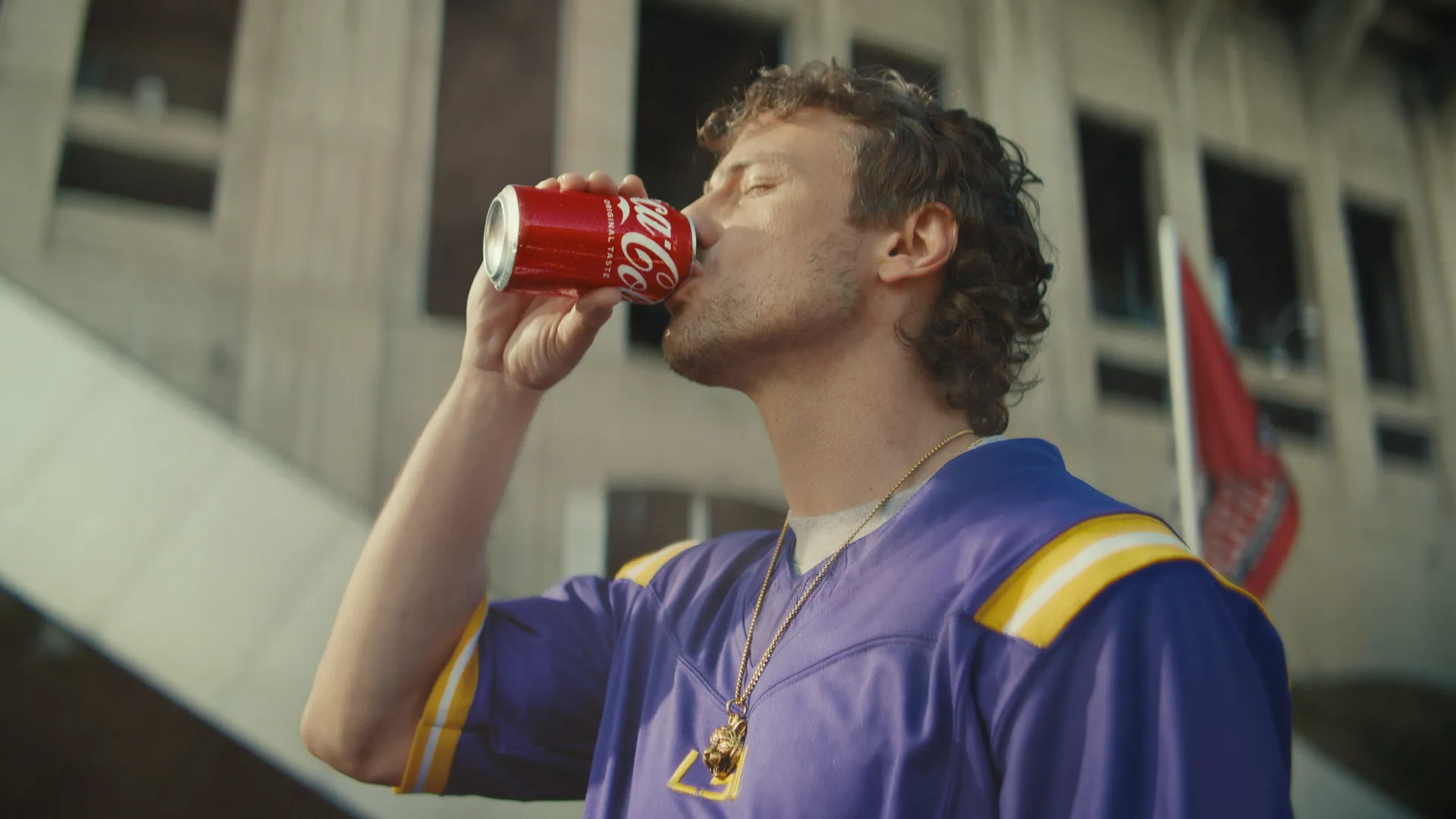One in four Britons admits to knowingly buying fake products; those who don’t concerned about quality, crime, and exploiting workers in third world countries
1 Jul 2025





Author
Martin Croft
PR & Communications Manager
Overall levels of consumption of physical counterfeit goods by UK consumers are down slightly compared with previous research, according to the latest tracking study published by the UK Intellectual Property Office.
Wave 4 of the IPO’s ongoing Counterfeit goods research found that around a quarter (24%) of the sample said they had knowingly made a counterfeit purchase. This is a drop of 5 percentage points (pp) compared to the previous wave (Wave 3). A smaller proportion (15%) currently knowingly bought fake items often, sometimes, or occasionally (a decrease of 4pp compared to the previous wave).
Most respondents (76% in Wave 4) indicated that they had never knowingly purchased counterfeits. Despite slight fluctuations between waves, the top three reasons for not purchasing counterfeits were consistent. These included not liking the quality of counterfeit products, concerns about supporting criminal activity, and the use of low-cost labour or poor working conditions.
The research that Wave 4 of the study is based on was conducted in 2023; the first wave, Wave 1, was carried out in 2019, Wave 2 in 2021 and Wave 3 in 2022.
As with previous waves, there was a strong correlation between age and counterfeit purchasing exists. Younger respondents were more likely to purchase counterfeits. Among those currently purchasing counterfeits, 27% were aged 25-34, 21% were aged 35-44, and 20% were aged 18-24. This contrasted with 14% of respondents aged 45–55 and only 7% of those aged 55 and above. In all age groups, 5-14% of respondents indicated that they used to buy counterfeits but no longer do.
Wave 4 of the counterfeit goods tracker showed that, in all categories, purchases stayed the same or fell. The most substantial decline compared to the previous wave was observed in “Toys” (falling by 5pp to 9%), which returned to the level seen in Wave 2. “Clothing, footwear, and accessories” (12%) and “Sports” (12%) had the highest proportions of counterfeit purchasing.
There were some shifts in the sources of counterfeit purchases in Wave 4. Buying counterfeit goods in-person rose in several categories. These include “Sportswear from clubs/franchises” (+13pp), “Electrical accessories” (+11pp), and “Accessories excluding watches” (+10pp). All other categories remained similar to Wave 3.
Buying counterfeit goods online saw increases in the online purchase of “Cosmetic and toiletry products” (+6pp) and a decrease in those purchasing “Electrical accessories” (-6pp), “Regular sportswear” (-6pp), and “Sportswear from clubs/franchises” (-5pp). Whilst this wave had some fluctuations, the results remained consistent with the long-term trend observed seen the pre-COVID-19 Wave 1 and the post-COVID-19 waves afterward. This trend has seen in-person purchasing generally stay below the levels seen in Wave 1. It has also seen a sustained increase in online purchasing.
Respondents were also asked whether they had ever ‘unintentionally’ purchased a counterfeit good. Overall, 17% had done so with most (55%) of this group having done so over a year ago. This is in line with the first wave of the study where 16% had made an unintentional purchase.
At 21%, male respondents were 8% more likely to have unintentionally bought fake goods than female respondents. Those aged 25-44 were also more likely to be unintentional purchasers. Between 24-26% of those aged 25-44 had done so, which fell to 19% in those aged 18-24, 18% in those aged 45-54 and 9% in the 55+.
Many respondents felt angry after their purchase, with this most likely to be directed at the person/company who sold them the product (38%) or themselves for not spotting it (36%). Other respondents were more likely to feel indifferent about their purchase (19%) than be angry at the authorities (14%) or the brand they had intended to purchase (14%).
Overall levels of consumption of physical counterfeit goods by UK consumers are down slightly compared with previous research, according to the latest tracking study published by the UK Intellectual Property Office.
Wave 4 of the IPO’s ongoing Counterfeit goods research found that around a quarter (24%) of the sample said they had knowingly made a counterfeit purchase. This is a drop of 5 percentage points (pp) compared to the previous wave (Wave 3). A smaller proportion (15%) currently knowingly bought fake items often, sometimes, or occasionally (a decrease of 4pp compared to the previous wave).
Most respondents (76% in Wave 4) indicated that they had never knowingly purchased counterfeits. Despite slight fluctuations between waves, the top three reasons for not purchasing counterfeits were consistent. These included not liking the quality of counterfeit products, concerns about supporting criminal activity, and the use of low-cost labour or poor working conditions.
The research that Wave 4 of the study is based on was conducted in 2023; the first wave, Wave 1, was carried out in 2019, Wave 2 in 2021 and Wave 3 in 2022.
As with previous waves, there was a strong correlation between age and counterfeit purchasing exists. Younger respondents were more likely to purchase counterfeits. Among those currently purchasing counterfeits, 27% were aged 25-34, 21% were aged 35-44, and 20% were aged 18-24. This contrasted with 14% of respondents aged 45–55 and only 7% of those aged 55 and above. In all age groups, 5-14% of respondents indicated that they used to buy counterfeits but no longer do.
Wave 4 of the counterfeit goods tracker showed that, in all categories, purchases stayed the same or fell. The most substantial decline compared to the previous wave was observed in “Toys” (falling by 5pp to 9%), which returned to the level seen in Wave 2. “Clothing, footwear, and accessories” (12%) and “Sports” (12%) had the highest proportions of counterfeit purchasing.
There were some shifts in the sources of counterfeit purchases in Wave 4. Buying counterfeit goods in-person rose in several categories. These include “Sportswear from clubs/franchises” (+13pp), “Electrical accessories” (+11pp), and “Accessories excluding watches” (+10pp). All other categories remained similar to Wave 3.
Buying counterfeit goods online saw increases in the online purchase of “Cosmetic and toiletry products” (+6pp) and a decrease in those purchasing “Electrical accessories” (-6pp), “Regular sportswear” (-6pp), and “Sportswear from clubs/franchises” (-5pp). Whilst this wave had some fluctuations, the results remained consistent with the long-term trend observed seen the pre-COVID-19 Wave 1 and the post-COVID-19 waves afterward. This trend has seen in-person purchasing generally stay below the levels seen in Wave 1. It has also seen a sustained increase in online purchasing.
Respondents were also asked whether they had ever ‘unintentionally’ purchased a counterfeit good. Overall, 17% had done so with most (55%) of this group having done so over a year ago. This is in line with the first wave of the study where 16% had made an unintentional purchase.
At 21%, male respondents were 8% more likely to have unintentionally bought fake goods than female respondents. Those aged 25-44 were also more likely to be unintentional purchasers. Between 24-26% of those aged 25-44 had done so, which fell to 19% in those aged 18-24, 18% in those aged 45-54 and 9% in the 55+.
Many respondents felt angry after their purchase, with this most likely to be directed at the person/company who sold them the product (38%) or themselves for not spotting it (36%). Other respondents were more likely to feel indifferent about their purchase (19%) than be angry at the authorities (14%) or the brand they had intended to purchase (14%).
Overall levels of consumption of physical counterfeit goods by UK consumers are down slightly compared with previous research, according to the latest tracking study published by the UK Intellectual Property Office.
Wave 4 of the IPO’s ongoing Counterfeit goods research found that around a quarter (24%) of the sample said they had knowingly made a counterfeit purchase. This is a drop of 5 percentage points (pp) compared to the previous wave (Wave 3). A smaller proportion (15%) currently knowingly bought fake items often, sometimes, or occasionally (a decrease of 4pp compared to the previous wave).
Most respondents (76% in Wave 4) indicated that they had never knowingly purchased counterfeits. Despite slight fluctuations between waves, the top three reasons for not purchasing counterfeits were consistent. These included not liking the quality of counterfeit products, concerns about supporting criminal activity, and the use of low-cost labour or poor working conditions.
The research that Wave 4 of the study is based on was conducted in 2023; the first wave, Wave 1, was carried out in 2019, Wave 2 in 2021 and Wave 3 in 2022.
As with previous waves, there was a strong correlation between age and counterfeit purchasing exists. Younger respondents were more likely to purchase counterfeits. Among those currently purchasing counterfeits, 27% were aged 25-34, 21% were aged 35-44, and 20% were aged 18-24. This contrasted with 14% of respondents aged 45–55 and only 7% of those aged 55 and above. In all age groups, 5-14% of respondents indicated that they used to buy counterfeits but no longer do.
Wave 4 of the counterfeit goods tracker showed that, in all categories, purchases stayed the same or fell. The most substantial decline compared to the previous wave was observed in “Toys” (falling by 5pp to 9%), which returned to the level seen in Wave 2. “Clothing, footwear, and accessories” (12%) and “Sports” (12%) had the highest proportions of counterfeit purchasing.
There were some shifts in the sources of counterfeit purchases in Wave 4. Buying counterfeit goods in-person rose in several categories. These include “Sportswear from clubs/franchises” (+13pp), “Electrical accessories” (+11pp), and “Accessories excluding watches” (+10pp). All other categories remained similar to Wave 3.
Buying counterfeit goods online saw increases in the online purchase of “Cosmetic and toiletry products” (+6pp) and a decrease in those purchasing “Electrical accessories” (-6pp), “Regular sportswear” (-6pp), and “Sportswear from clubs/franchises” (-5pp). Whilst this wave had some fluctuations, the results remained consistent with the long-term trend observed seen the pre-COVID-19 Wave 1 and the post-COVID-19 waves afterward. This trend has seen in-person purchasing generally stay below the levels seen in Wave 1. It has also seen a sustained increase in online purchasing.
Respondents were also asked whether they had ever ‘unintentionally’ purchased a counterfeit good. Overall, 17% had done so with most (55%) of this group having done so over a year ago. This is in line with the first wave of the study where 16% had made an unintentional purchase.
At 21%, male respondents were 8% more likely to have unintentionally bought fake goods than female respondents. Those aged 25-44 were also more likely to be unintentional purchasers. Between 24-26% of those aged 25-44 had done so, which fell to 19% in those aged 18-24, 18% in those aged 45-54 and 9% in the 55+.
Many respondents felt angry after their purchase, with this most likely to be directed at the person/company who sold them the product (38%) or themselves for not spotting it (36%). Other respondents were more likely to feel indifferent about their purchase (19%) than be angry at the authorities (14%) or the brand they had intended to purchase (14%).
Overall levels of consumption of physical counterfeit goods by UK consumers are down slightly compared with previous research, according to the latest tracking study published by the UK Intellectual Property Office.
Wave 4 of the IPO’s ongoing Counterfeit goods research found that around a quarter (24%) of the sample said they had knowingly made a counterfeit purchase. This is a drop of 5 percentage points (pp) compared to the previous wave (Wave 3). A smaller proportion (15%) currently knowingly bought fake items often, sometimes, or occasionally (a decrease of 4pp compared to the previous wave).
Most respondents (76% in Wave 4) indicated that they had never knowingly purchased counterfeits. Despite slight fluctuations between waves, the top three reasons for not purchasing counterfeits were consistent. These included not liking the quality of counterfeit products, concerns about supporting criminal activity, and the use of low-cost labour or poor working conditions.
The research that Wave 4 of the study is based on was conducted in 2023; the first wave, Wave 1, was carried out in 2019, Wave 2 in 2021 and Wave 3 in 2022.
As with previous waves, there was a strong correlation between age and counterfeit purchasing exists. Younger respondents were more likely to purchase counterfeits. Among those currently purchasing counterfeits, 27% were aged 25-34, 21% were aged 35-44, and 20% were aged 18-24. This contrasted with 14% of respondents aged 45–55 and only 7% of those aged 55 and above. In all age groups, 5-14% of respondents indicated that they used to buy counterfeits but no longer do.
Wave 4 of the counterfeit goods tracker showed that, in all categories, purchases stayed the same or fell. The most substantial decline compared to the previous wave was observed in “Toys” (falling by 5pp to 9%), which returned to the level seen in Wave 2. “Clothing, footwear, and accessories” (12%) and “Sports” (12%) had the highest proportions of counterfeit purchasing.
There were some shifts in the sources of counterfeit purchases in Wave 4. Buying counterfeit goods in-person rose in several categories. These include “Sportswear from clubs/franchises” (+13pp), “Electrical accessories” (+11pp), and “Accessories excluding watches” (+10pp). All other categories remained similar to Wave 3.
Buying counterfeit goods online saw increases in the online purchase of “Cosmetic and toiletry products” (+6pp) and a decrease in those purchasing “Electrical accessories” (-6pp), “Regular sportswear” (-6pp), and “Sportswear from clubs/franchises” (-5pp). Whilst this wave had some fluctuations, the results remained consistent with the long-term trend observed seen the pre-COVID-19 Wave 1 and the post-COVID-19 waves afterward. This trend has seen in-person purchasing generally stay below the levels seen in Wave 1. It has also seen a sustained increase in online purchasing.
Respondents were also asked whether they had ever ‘unintentionally’ purchased a counterfeit good. Overall, 17% had done so with most (55%) of this group having done so over a year ago. This is in line with the first wave of the study where 16% had made an unintentional purchase.
At 21%, male respondents were 8% more likely to have unintentionally bought fake goods than female respondents. Those aged 25-44 were also more likely to be unintentional purchasers. Between 24-26% of those aged 25-44 had done so, which fell to 19% in those aged 18-24, 18% in those aged 45-54 and 9% in the 55+.
Many respondents felt angry after their purchase, with this most likely to be directed at the person/company who sold them the product (38%) or themselves for not spotting it (36%). Other respondents were more likely to feel indifferent about their purchase (19%) than be angry at the authorities (14%) or the brand they had intended to purchase (14%).
Read Recent Articles
Inngot's online platform identifies all your intangible assets and demonstrates their value to lenders, investors, acquirers, licensees and stakeholders
Accreditations



Copyright © Inngot Limited 2019-2025. All rights reserved.
Inngot's online platform identifies all your intangible assets and demonstrates their value to lenders, investors, acquirers, licensees and stakeholders
Accreditations



Copyright © Inngot Limited 2019-2025. All rights reserved.
Inngot's online platform identifies all your intangible assets and demonstrates their value to lenders, investors, acquirers, licensees and stakeholders
Accreditations



Copyright © Inngot Limited 2019-2025. All rights reserved.
Inngot's online platform identifies all your intangible assets and demonstrates their value to lenders, investors, acquirers, licensees and stakeholders
Accreditations



Copyright © Inngot Limited 2019-2025. All rights reserved.




